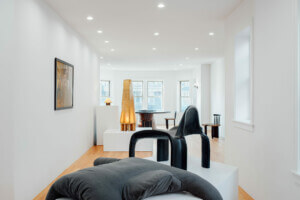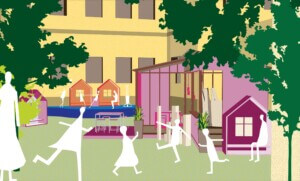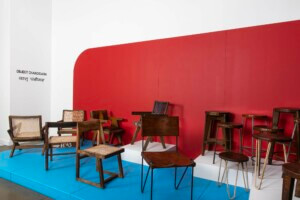Natural science and furniture making might seem like completely opposed fields of study and practice, but for emerging designer Joyce Lin the two are intrinsically linked. As a recent graduate of the Brown–Rhode Island School of Design (RISD) Dual Degree Program, the Houston-based wunderkind combines the best of both worlds in works of art that challenge common perceptions.
AN Interior: How did you decide to study both science and design? And how does this hybrid education continue to inform your work?
Joyce Lin: I knew going into college that I wanted to study a science as well as heavy sculpture. When looking at the strongest programs at both schools, I came across the highly interdisciplinary furniture design program at RISD. I was drawn to the idea of learning how to work with materials and find ways to transform them into all-encompassing and exacting results. Even if my goal was not to make functional furniture, I liked the aspect of problem-solving involved. Even now I equate this aspect of the practice to putting a thread through a needle or landing a plane.
After trying out different classes at Brown, I came across an equally interdisciplinary geology course, which covered all sciences. What stuck out to me most was the concept of narrative: telling the earth’s story, how things got to be the way they are today, how they’re still interconnecting, and how we can still see the past in our environment. This understanding informs how I create and transform objects. I’m interested in emphasizing how something is made but also exploring the paradox of permanence and impermanence, as well as the opaqueness and transparency that mark our modern materials, processes, and attitudes. These are forces found in nature but that we have also manipulated as humans, resulting in anthropogenic materials like plastic, foam, and resin. As a maker, I naturally take on the role of a human being in this capacity by flattening live plants and deconstructing furniture, and sealing both of these natural and manmade elements behind sterile, meticulously crafted plastic to represent a limbo state of connection and disconnection, chaos and order.
Read the full interview on our interiors and design website, aninteriormag.com.











